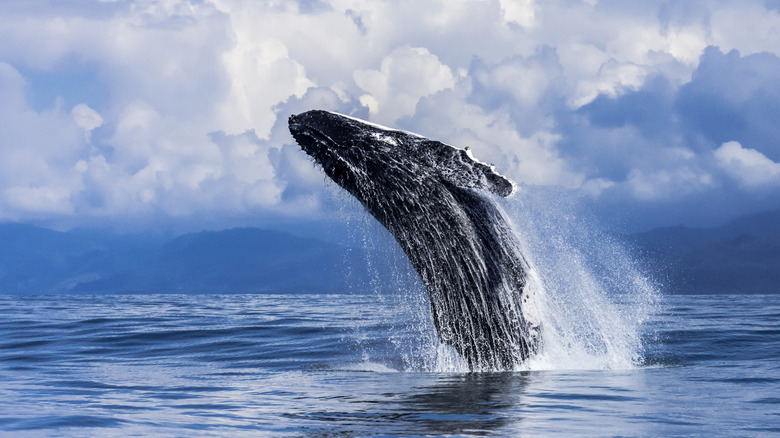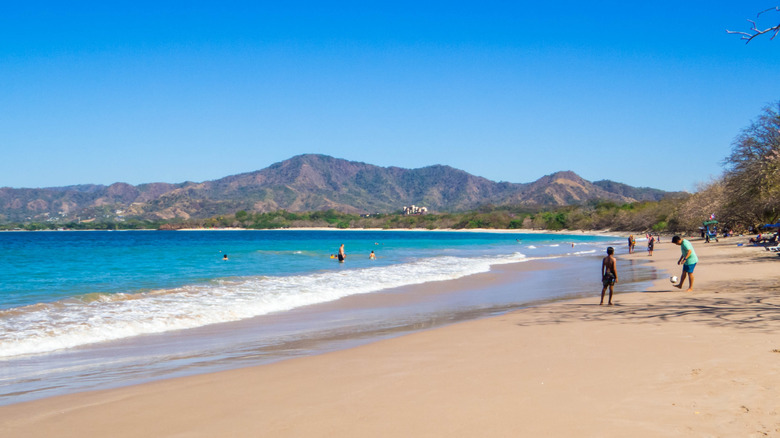A Sun-Soaked Costa Rican Surf Town Hosts The World's Longest Whale-Watching Season
How do you even process the presence of a humpback whale? Here is a living, breathing mammal that can grow up to 60 feet long and weigh 80,000 pounds. As its back arches out of the water and a wet plume bursts from its blowhole, you realize just how gigantic this creature is. Then the tail lifts up, like a giant oar, flexing upward and slipping back into the depths. Truly, a whale watch is one of the most magical encounters you can have with nature, and if you can just overcome motion sickness, pretty much anyone can participate.
One of the most surprising places to find humpback whales is Costa Rica. Not only do these gentle giants migrate along the tropical nation's Pacific coast, but their "season" here is the longest in the world, thanks to a rare convergence of northern and southern breeds, which effectively meet in the middle of the hemisphere. In these near-equatorial waters, each humpback feasts on 1.5 tons of krill per day — and keeps an eye out for a mate. Humpbacks are a favorite sight, but these waters also welcome around 24 additional species of whale and dolphin throughout the year, making Costa Rica one of the best destinations for whale watching.
You can find tours all along Costa Rica's dynamic coast, but one of the most convenient places is Tamarindo, a popular surf town in the northwest province of Guanacaste. Costa Rica has mastered the art of nature-focused tourism, and between 2 and 3 million travelers come here each year to spot sloths, photograph birds, and cavort with howler monkeys. Taramindo is a major hub for first-time travelers, where tours can easily be arranged — including whale watching.
Tamarindo: Costa Rica's most convenient destination
To start, Tamarindo is just a 90-minute drive from Daniel Oduber Quirós International, a smaller northern airport that receives direct flights from 24 destinations in three countries. This airport spares travelers the headache of flying into Costa Rica's shambolic capital, San José, and expedites your arrival at the beach. Tamarindo is extremely well equipped for tourism, with sprawling sands, beautiful hills, diverse restaurants, boozy nightlife, and surf-ready waves. If you just want to relax in a hammock and tromp around some toucan-filled rainforest, even Rick Steves will tell you that Costa Rica is the ideal escape for burnt-out travelers.
Many consider Tamarindo the unofficial capital of Costa Rica's "Gold Coast," a network of beaches and islands that speckle the nation's northern Pacific edge. This is a magnetic destination for snorkeling, diving, fishing, surfing, and partying on catamarans. Guanacaste gets very hot and dry in the high season, making it ideal for water sports. If you're looking to spot some whales, you can pick almost any time between December and March as well as August through October.
Be aware that Tamarindo is not the most famous whale-watching spot in Costa Rica; that distinction goes to Uvita de Osa, a spit of land that is coincidentally shaped like a whale's tale. If you have time, consider a road trip south to this natural wonder. But for sheer convenience, Tamarindo is a great place to start. With luck, you'll get to see a humpback breach.

